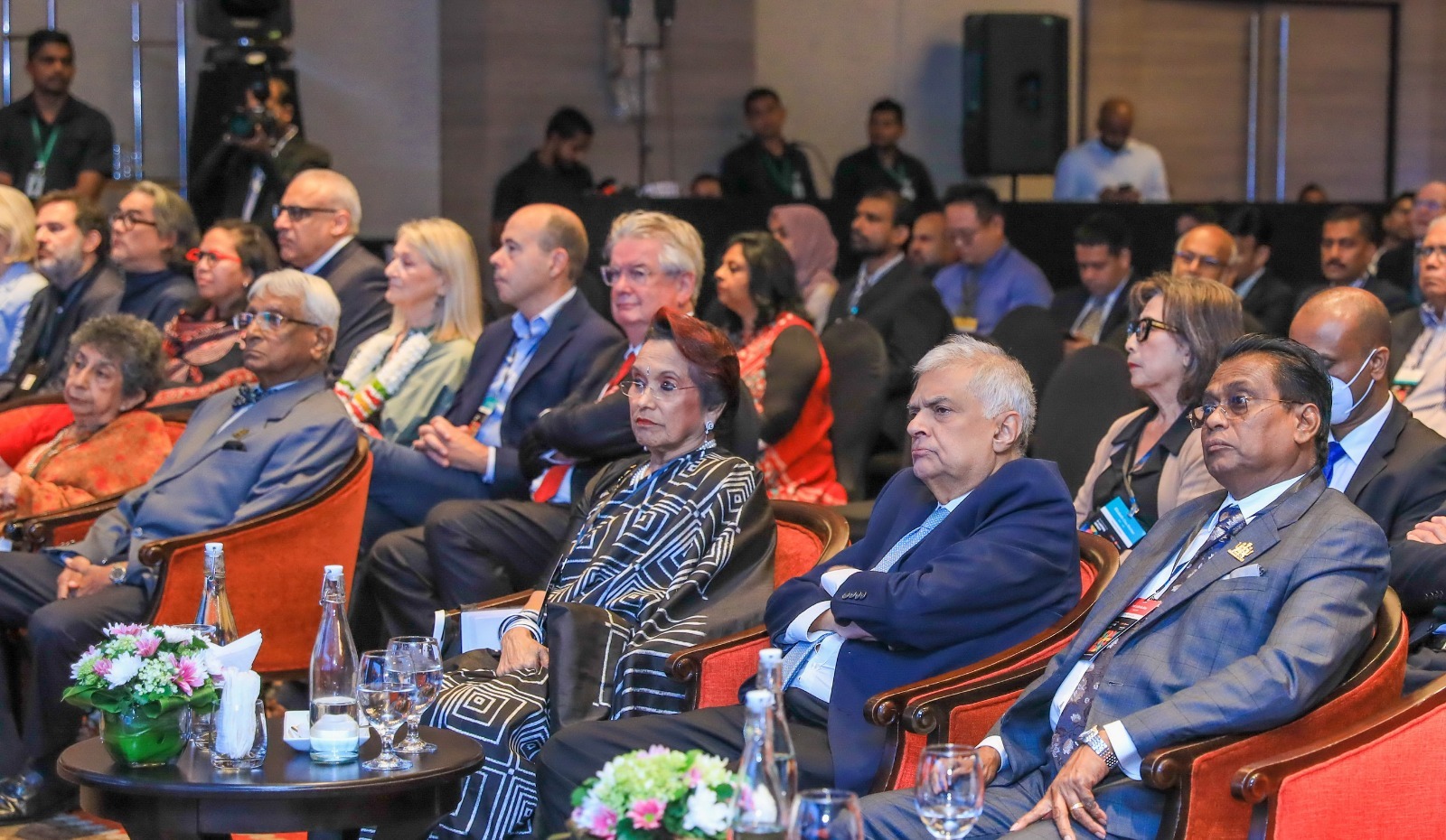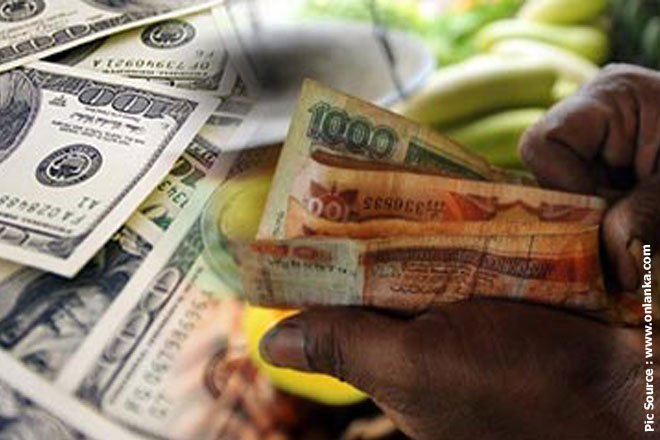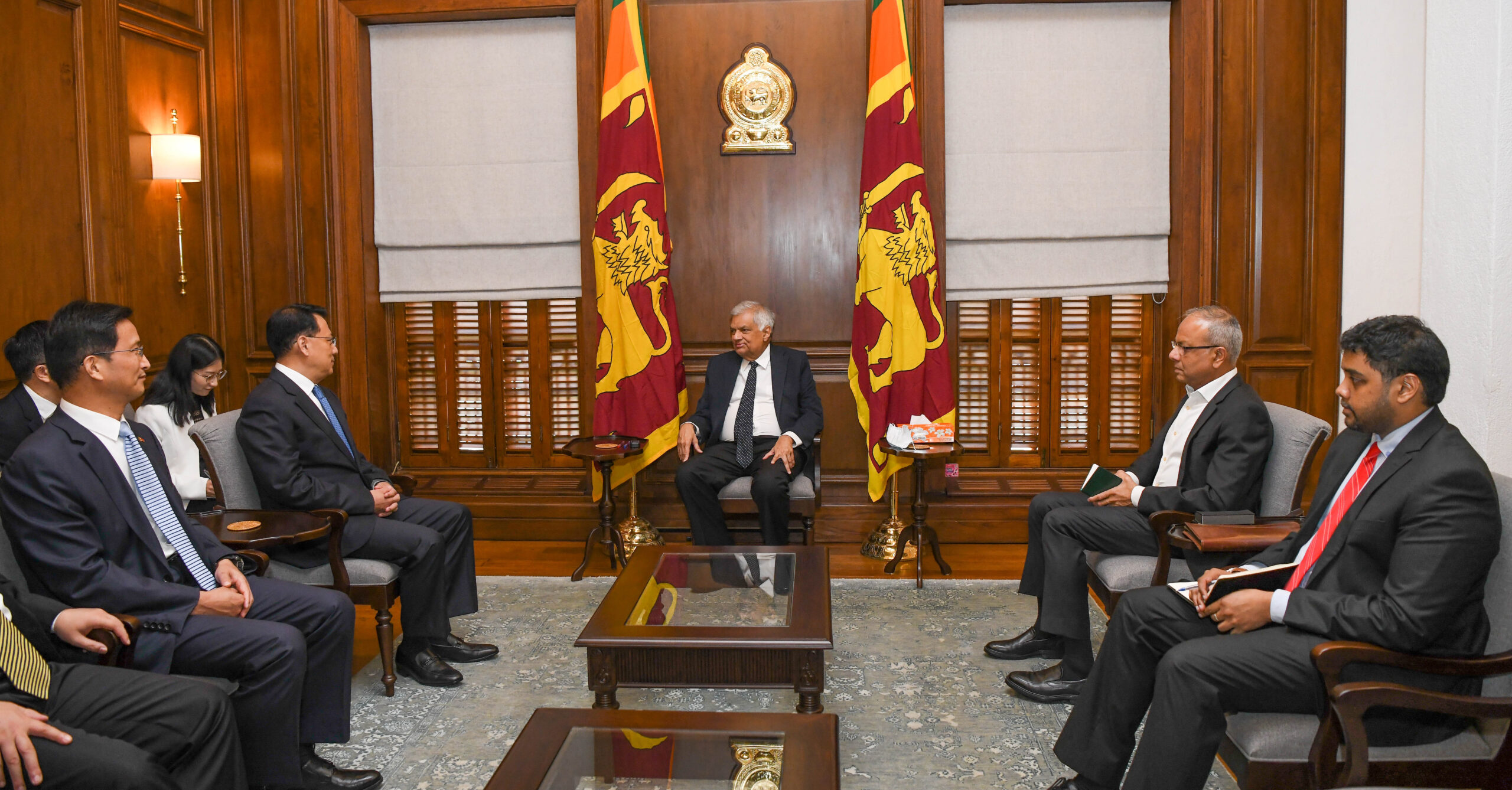Sri Lanka President Ranil Wickremesinghe emphasized that Sri Lanka has demonstrated a strong commitment to addressing climate change goals. Going forward, Sri Lankan architects will play a pivotal role in this endeavour. They will need to integrate climate change criteria into their designs, ensuring that the built environment aligns with sustainable and environmentally responsible practices. Integrating sustainable and environmentally conscious practices into our architectural designs will be instrumental in achieving our climate goals ahead of the set timeline. Also, together, we can build a resilient and environmentally friendly future for Sri Lanka, contributing to global efforts to combat climate change and protect our planet for generations to come.
The President further mentioned prominent examples of significant architectural achievements such as the grand dagabas, including Ruwanwelisaya, Abhayagiri, and Jetavanaramaya, as well as iconic structures like Sigiriya, which stands as a prime example of exceptional architecture recognized worldwide. These architectural marvels are further exemplified by the structures found in Polonnaruwa. Notably, even during a period of decline, architectural endeavours persevered, evidenced by the expansion of the Dalada Maligawa featuring its octagonal design, and the construction of the Kandy Lake under the reign of the last king.
President Wickremesinghe further stressed that throughout history, Sri Lanka has showcased its architectural prowess, evident in remarkable structures like the Trinity College Chapel, Kelaniya Vihara, Lake House building, Peradeniya University, Independence Square, and the Art Gallery, among others. The iconic Parliament building designed by Jeffrey Bawa has added to this rich architectural heritage.
The President emphasized that if remarkable architectural feats were accomplished 2,000 or 1,000 years ago, there is no reason why the same level of excellence cannot be achieved in the present and future. The responsibility to create a lasting impact through architecture was entrusted to the Architects.
President Ranil Wickremesinghe made these remarks at an international conference on Architecture, which was organized by the Royal Institute of British Architects (RIBA) Chapter in Sri Lanka, in collaboration with the American Institute of Architects (AIA) and the Italian Embassy of Sri Lanka, on the theme: “Architecture: A Lasting Impact,” held at Cinnamon Grand, Colombo.
The vision to transform Colombo into a beautiful city is already in motion, with plans provided by Surbana Jurong. Similar plans have been prepared for Trincomalee, aiming to enhance the development in that region as well. Additionally, Surbana Jurong is actively involved in creating a tourist zone from Verugal Aru to Batticaloa and Arugam Bay areas, contributing to the growth of the tourism industry.
The focus on expanding the tourist industry is expected to create opportunities for non-government universities in Sri Lanka. The recent enactment of the new act, allowing provincial councils to establish universities, marks the beginning of this endeavour. There is a growing need for skilled professionals, including engineers, architects, IT specialists, and others, with the demand estimated to be at least 10,000 engineers alone.
To address these requirements, discussions are underway with Japan, which has shown a willingness to assist in the past. Despite some challenges posed by the recent crisis, the commitment to progressing these plans remains strong, with the hope of securing the necessary support to meet the country’s developmental needs.
Envisioning the future, the potential for architects to participate in the development of the Port City holds significant promise. A notable portion of the Port City land is under government ownership and is slated for diverse utilization. The involvement of the private sector in this initiative offers an added avenue to harness architectural expertise. This exploration requires collaborative dialogues involving relevant chambers and stakeholders.
These emerging opportunities symbolize valuable prospects for Sri Lanka. Seizing these chances has the potential to establish a notable standing for the nation. It’s imperative to acknowledge that as India’s progress persists, architectural possibilities might also arise there. Those with established recognition could potentially tap into this market, mirroring the engagement of architects in Africa for house design.
Effectively orchestrating these prospects is critical for architects’ personal growth and the broader advancement of the discipline. By tapping into these potentials, Sri Lankan architects can substantially contribute to the country’s advancement while carving an illustrious identity for themselves on both regional and global platforms.
The President acknowledged that his expertise lies primarily in the field of the economy and not architecture. As the discussion revolves around architecture and the lasting impression it creates, the President opted not to delve into the topic extensively. It was emphasized that ancient architects achieved the task of leaving a lasting impression through their work.
Numerous architects have contributed to this legacy with their creations. However, the present challenge lies in not only preserving this rich heritage but also elevating it to meet global standards. This endeavour comes at a time when the construction industry is facing a downturn, a consequence of the recent crisis. Over the past two years, this sector has experienced significant setbacks, resulting in the unfortunate loss of numerous jobs and a noticeable reduction in available projects. However, amidst the challenges faced by the construction industry, the country now stands at a critical juncture. The last two years have witnessed a downturn in the construction sector, leading to job losses for many and a decline in available projects. Despite these difficulties, there is a pressing need to preserve and elevate this architectural legacy to international standards.
The future lies in how the nation can continue its architectural journey and build upon its heritage to create structures that not only exemplify Sri Lanka’s identity but also meet global standards. Emphasizing innovation and creativity will be crucial in revitalizing the construction industry and rekindling its growth for a promising future.
In the past, the economy predominantly revolved around concrete-based development, primarily directed at infrastructure like roads and irrigation projects. However, the resulting debt burden has contributed to the current crisis. This situation doesn’t mandate a complete halt to construction; rather, economic restructuring calls for a shift in focus to other sectors. While revitalizing construction is desired, it may not reach previous levels. Furthermore, there’s a need to encourage our construction companies to explore international opportunities.
As part of the approach, the government is looking to involve private companies in building homes and structures. This is just the beginning. It will create more affordable housing for people with low and middle incomes. The government land that’s worth more than the buildings can be used for this purpose and to relocate people from there and give the land to private companies to build affordable homes and apartments. This will also free up space in Colombo for other developments. It’s like a cycle – more buildings, more possibilities. Imagine what could happen if they repurpose places like Welikada Prison or even the railway area. Some buildings on Mount Mary can be kept, but the rest can be used for new projects. Many areas could benefit from this. And the cost of land today makes it feasible. The Treasury is working on the details, so starting maybe next year or the year after, as the economy gets stronger, this could become a reality.
The government is actively engaged in the promotion of tourism, with a target of increasing the number of tourists from 2.5 million to 5 million, and potentially up to 7.5 million. This endeavor entails diverse categories of accommodations, including various styles of bungalows. The restoration of historical structures to create smaller boutique hotels and the revitalization of larger hotels in various regions across the country represents a significant focus area. This ambitious goal involves doubling the existing capacity. It’s important to note that the majority of this expansion will be realized through the construction of new buildings or the renovation of existing ones, thereby offering yet another avenue for the involvement of architects.
A third strategic initiative involves the expansion of our existing investment promotion zones. The current discussions revolve around the establishment of expansive zones spanning thousands of acres, which will be gradually opened up. This expansion is set to facilitate the construction of additional factory buildings to accommodate growing industries. With Sri Lanka’s increasing role as a logistical hub, there will also be a heightened demand for logistics buildings, which are relatively straightforward to design.
These represent just a few of the concepts we’re considering. As the economy gains momentum, it’s likely that we’ll witness an increase in the construction of skyscrapers, high-rise structures, and residential homes. However, strategic planning is crucial to determine the locations, methods, and integration with our evolving transportation system. This is the direction I envision for the future, and it’s where our dedicated efforts must be focused.
The re-planning of Kandy Town to potentially extend its boundaries up to Teldeniya, along with considerations for incorporating Peradeniya and potentially Talatu Oya, are subjects currently under committee deliberation. The committee will be responsible for making informed decisions regarding these proposals. Notably, the extension of the new town and bridge to Peradeniya is viewed as a significant priority. These opportunities signify important prospects for development. Similarly, Galle is engaged in evaluating the enhancement of its urban landscape, particularly the sea frontage.
Additionally, it is likely that other regions, such as Nuwara Eliya town, will also require reimagining and redesigning in new locations. This presents a significant task. The pertinent question is whether we are prepared to embrace this challenge, which we must undertake. Collaboration with international counterparts will also be essential for successful execution.
The impending tasks are undoubtedly of substantial magnitude. However, there is another crucial aspect that warrants attention. Sri Lanka remains steadfast in its commitment to climate change objectives. Notably, upon assuming leadership, adjustments were made to hasten the timeline from 2060 to 2050 for achieving climate change targets. Recent discussions at a UN session, prompted by the concerning fires in Europe, have spurred a re-evaluation of this timeline. There is a contemplation of expediting these efforts even before 2050. This endeavor’s feasibility rests, in part, upon available resources. Consequently, architects now face the imperative of aligning their designs with climate change criteria, marking a significant shift in their role and responsibilities.
Reflecting on the past, Jeffrey Bawa’s remarkable work, such as the Kandalama project, highlights a growing trend of impressive designs in various scales. Sri Lankan architects are excelling in creating climate-responsive buildings, outperforming their counterparts elsewhere. Future laws and regulations will demand climate-adaptive constructions. An innovative concept emerges: establishing the International Climate Change University, comparable in size to Peradeniya University, within the former Kotmale Skanska camp. This presents significant opportunities. Presently, architects have a mission: leaving a lasting impact, reminiscent of historical achievements. The ability to achieve greatness in the past prompts a pertinent question: Why not now and in the future? This call is directed towards those pioneering architectural progress. The blueprint is set, and the drive to establish an enduring legacy rests with the architects of tomorrow.
Douglas E. Sonnek, Deputy Chief of Mission at the U.S. Embassy in Colombo, Lisa Whanstall, the Acting British High Commissioner to Sri Lanka, Representatives from the Italian Embassy in Colombo, and nearly 350 people, including architects from Sri Lanka and South and Southeast Asia, attended the event.





